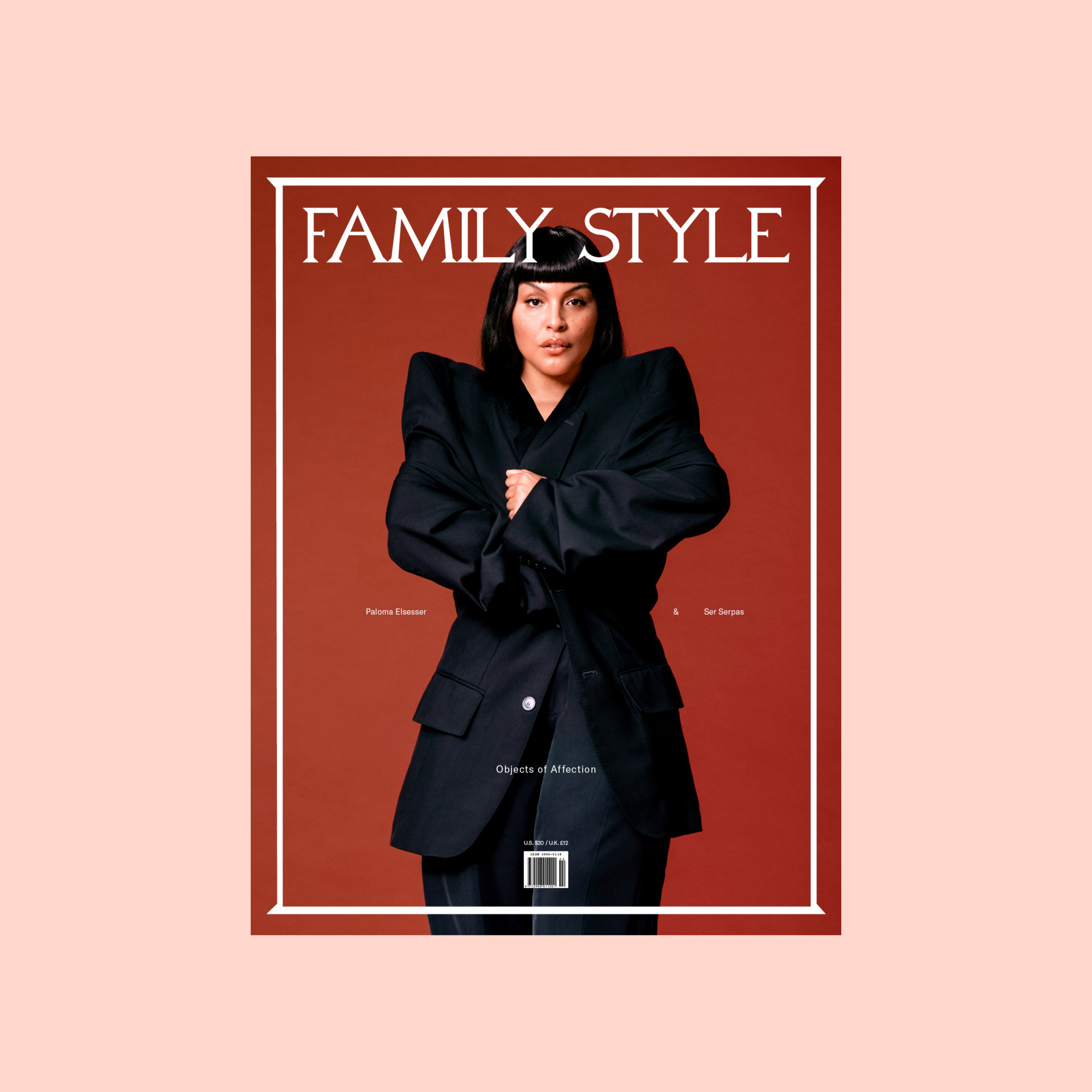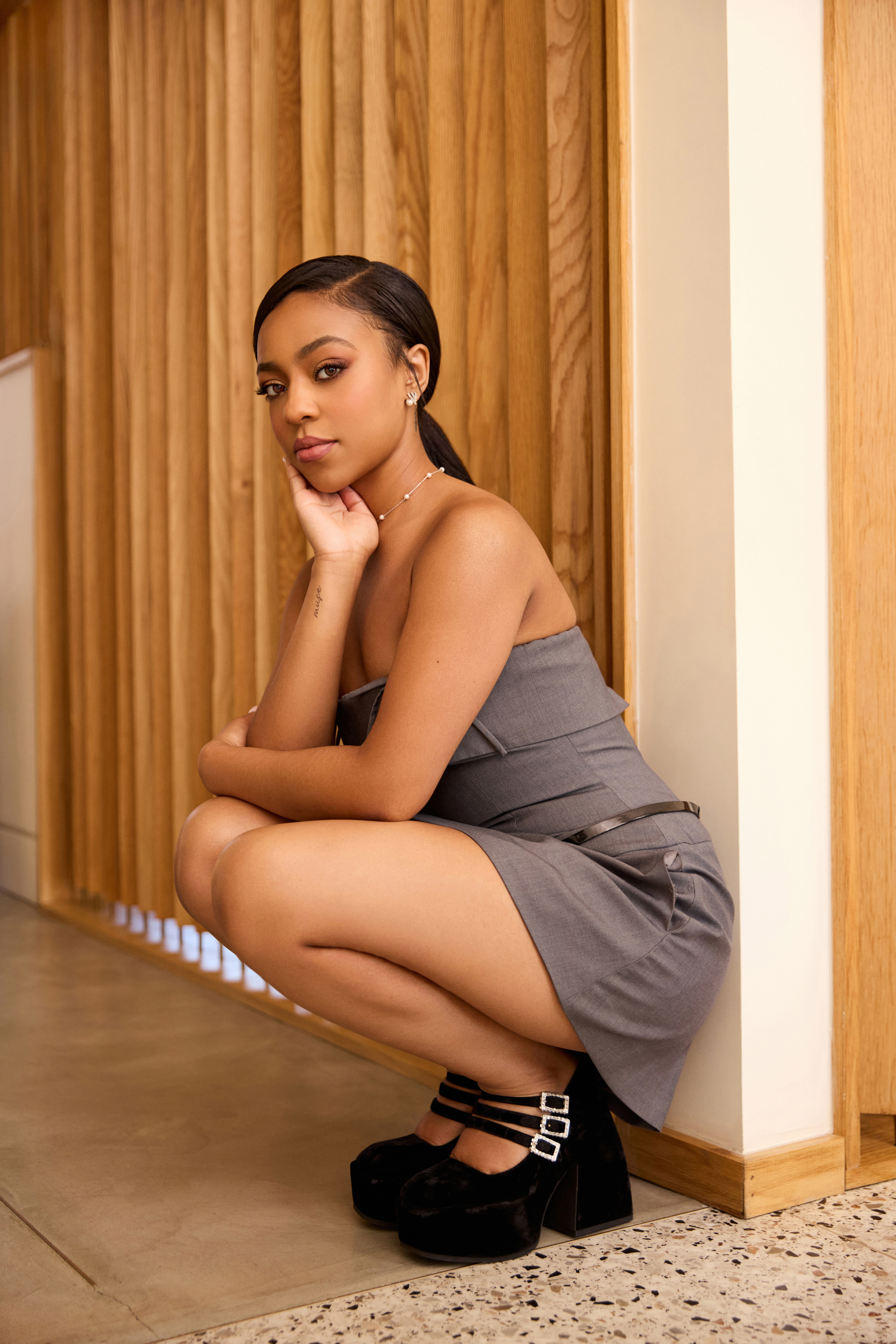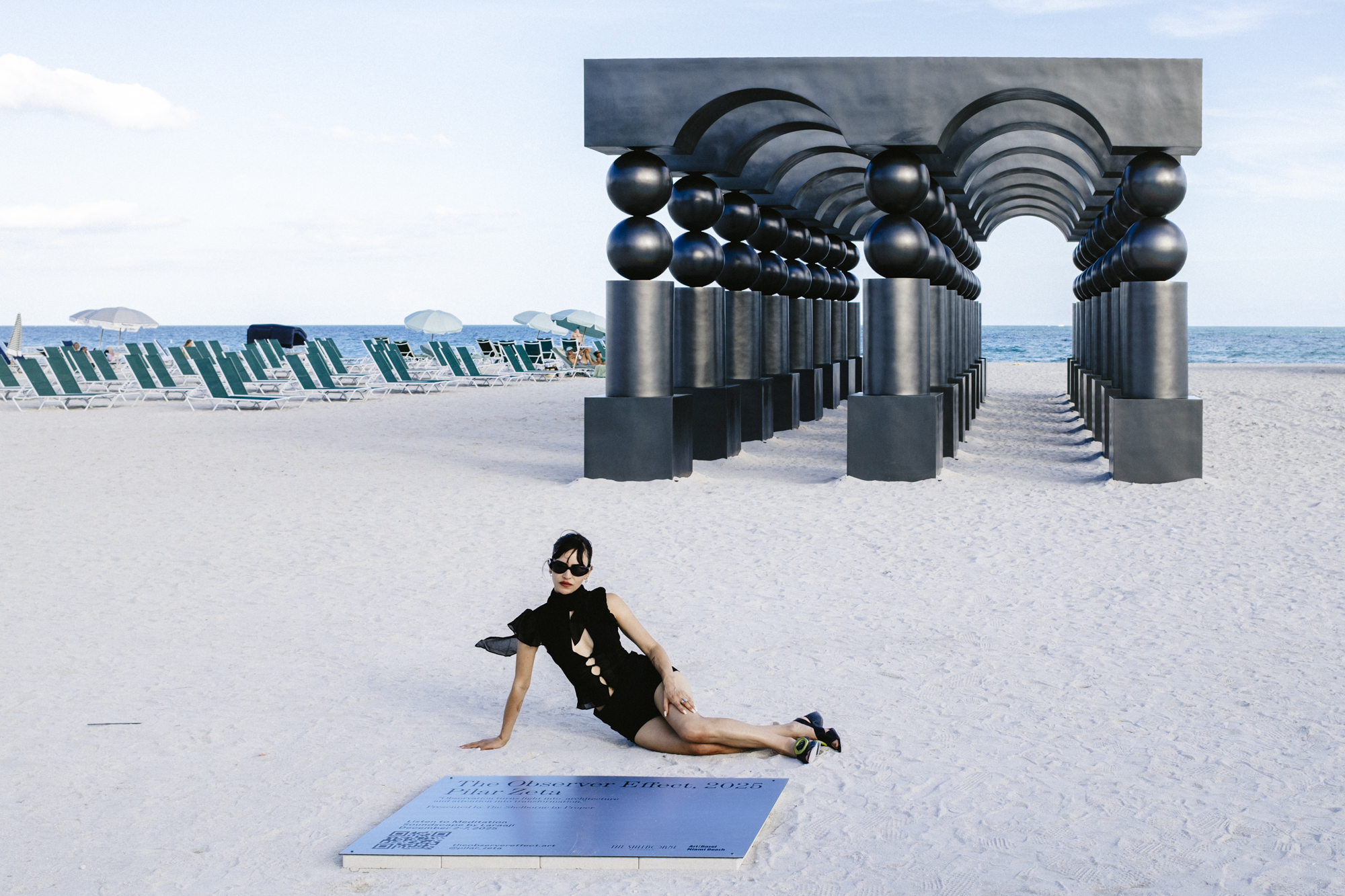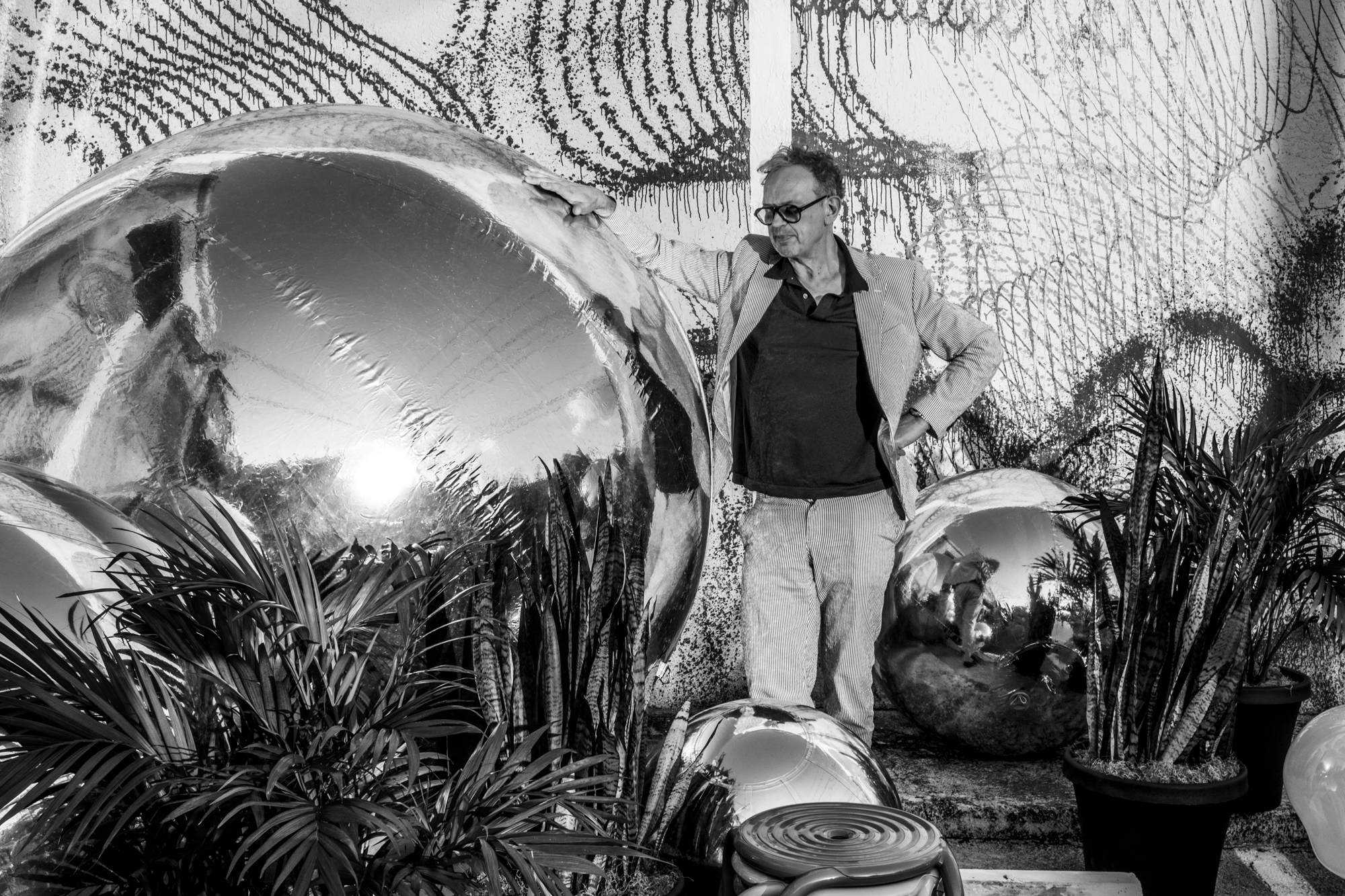Joshua Glass is the founder of Family Style a new magazine aimed at the intersection of food and culture, or an “imaginary dinner party,” as he describes it. I spoke with Joshua about his history in print magazines and his goals for the magazine.
Chris Force: Could you give me a bit of history on what you’ve been doing in the industry and what led you to this moment?
Joshua Glass: My entire life has revolved around magazines and publishing. I’ve been lucky to work at some of the magazines I grew up dreaming about, which have really changed my experiences irrevocably. Family Style is a culmination of the good, the bad, and everything else. My first magazine job was at BlackBook, it was like a downtown book of New York City. We covered culture, entertainment, movies. I was a little editorial assistant, mostly doing front-of-book content. Ironically, I did a lot of news write-ups for restaurants—not much editorial in terms of reviewing. It was more like, “Oh, this place opened up, check it out.” I was organizing editorial content more than anything. But that really reassured me that this was what I was passionate about.
I won’t go through every experience I’ve had, but I’ve worked at some meaningful places that still inspire me today. For example, Document Journal was a really meaningful experience. I’m still friends with the Editor-in-Chief, Nick Vogelson, and we recently bonded over frustrations with a photographer we both worked with. It’s nice to go from working under someone to now having them as a peer, relating to the same issues that you didn’t understand before when you were just focusing on one aspect of the job.
CR Fashion Book was another place where I was for a long time. It’s where I made a lot of my strong, long-term friendships, and where I’ve drawn many of our collaborators for Family Style.
I started Family Style because I loved each of these experiences, but I also saw a unique opening in the marketplace for media. I love publishing—don’t get me wrong, it’s the core of what we do—but I also saw an opportunity to create a media brand that could function as a beautiful print product, but also beyond that.
The magazine is like an imaginary dinner party where we bring together interesting people and voices from design, fashion, arts, and culture, and then we put them in this conceptual dinner party in the magazine. We bring that to life through our Supper Club series, where we pop up all over the world and bring people together around a meal, which is the ultimate form of coming together.
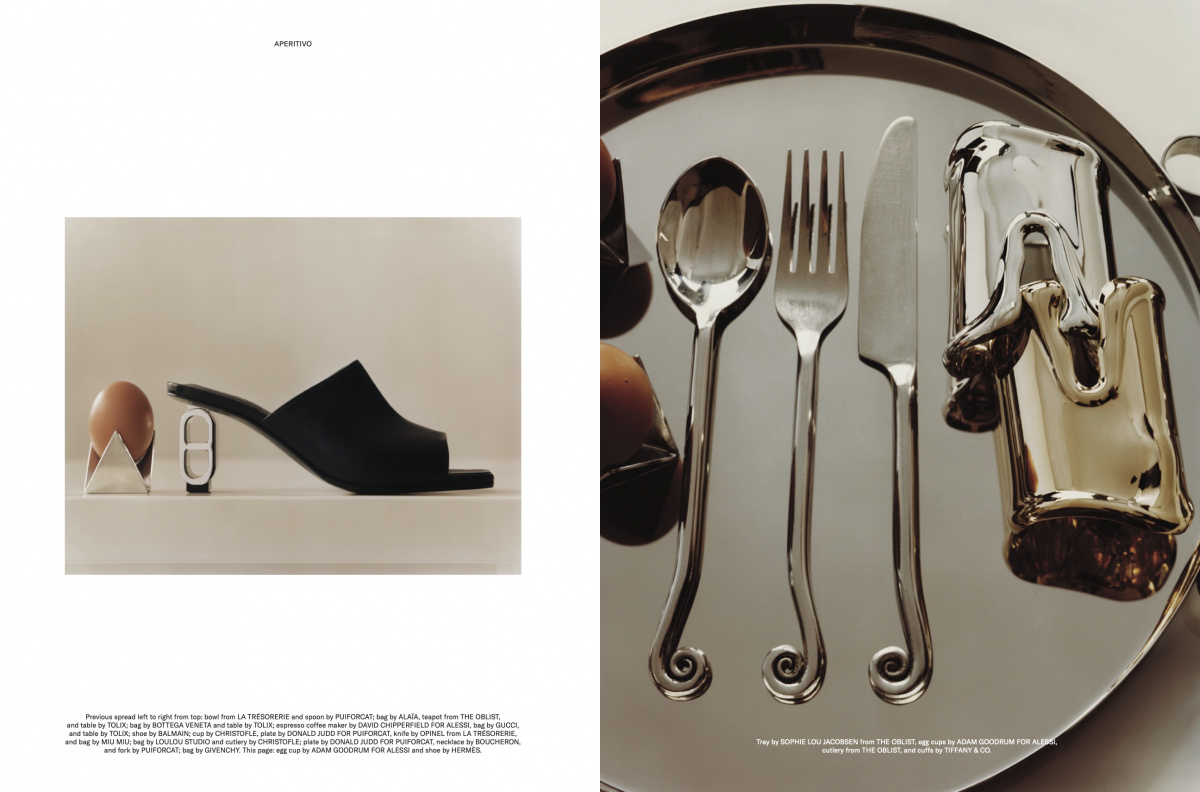
“Home is Her Magnum Opus” from Family Style magazine. Photography by François Coquerel
I’m curious about how you decided to start Family Style. How did you get it off the ground?
Everything is done on a shoestring budget. I worked on the strategy for the magazine for about a year and a half. I founded it myself, putting almost all my personal savings into it. We did a small round of funding and we did raise a small amount through minority ownership from two angels and one B2B partner. They’re an amazing company and gave us some infrastructure.
Otherwise, we’re very DIY and very much a startup. I think that speaks to the strength of the brand. We’re a seven-month-old startup, but we’re at some of the best institutions around the world and we aspire to and execute on a large-scale luxury platform.
When I have to explain our business to people unfamiliar with the industry, they often ask, “Why are you making a magazine?” My response is to encourage them to think bigger.
Imagine a universe with the magazine at its center. Yes, the magazine is a key part of it, but it’s more than just a publication—it’s a pure expression of the brand. As you zoom out from the center, you reach the next layer: social and digital media. These platforms are crucial for day-to-day engagement and consistent interaction with the audience.
But the print magazine remains our token, our trophy product—a tangible representation of our brand. The third layer that ties everything together is the experiential aspect. This is what people truly crave: connections and communities.
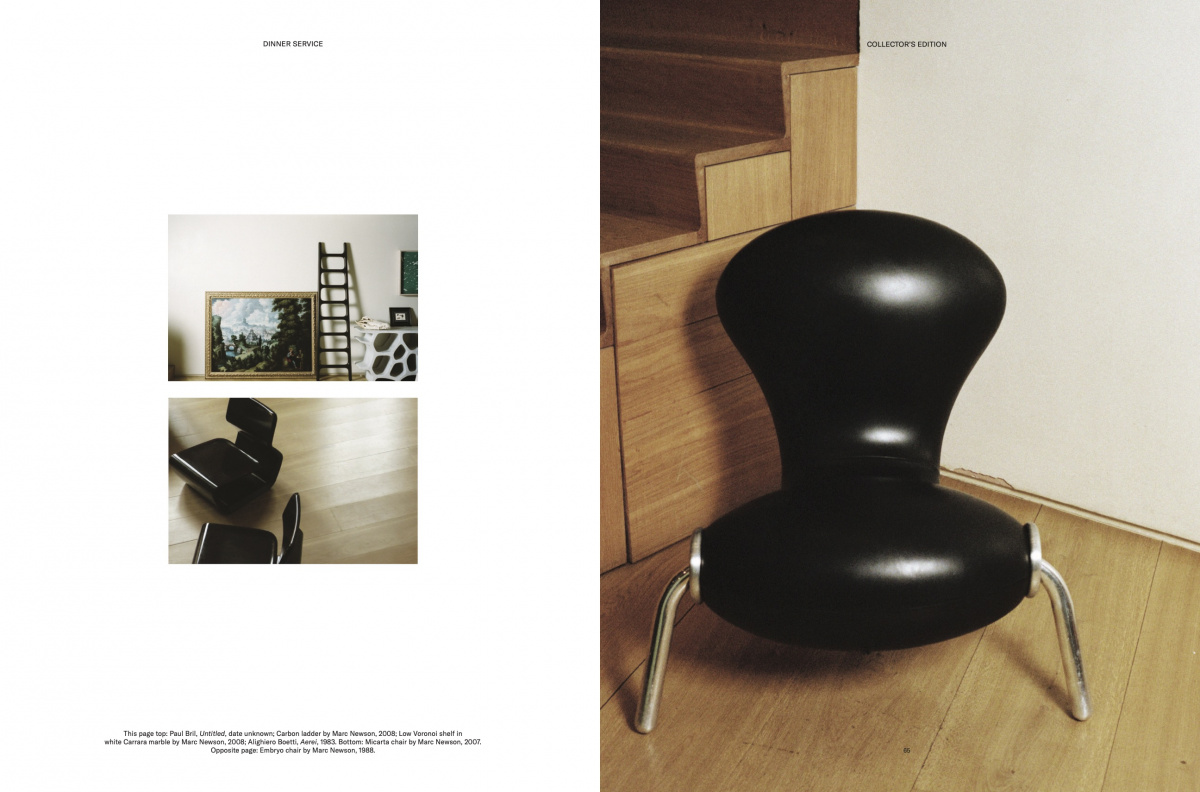
“Collector’s Edition” from Family Style magazine. Photography by Benedict Brink
How many people are in the studio full-time with you?
It really varies. Full-time is a funny term now, where the line between job, interest, and vocation is so blurred. On a good day, there are four of us in the office. We just moved into a Tribeca space, which is great. Our core team is about 12 people, and if you look at our masthead, we have a bigger group of contributors who are more at-large, like Clara Cornet in Paris or Jenny Walton in Milan. They come in and out for projects or when we’re activating their city.
Let’s say we fast forward and you’ve become wildly successful. How would you spend your days? What would you focus on?
I love what I do, but there are so many things I’ve learned that I don’t like, and it’s mostly operational admin. I think as we grow, I’ll hopefully be able to grow our team, especially on the operational side, and really just focus again.
I know I sound like a broken record, but I love making magazines. It’s really my favorite thing in the world. I love going through the run sheet, working with editors, writers, photographers, and designers. Right now, we’re in ramp-up mode, in a really intentional growth phase, so I find myself spread between creative, business, operations, and admin. But in a dream world, I’d be able to get back to my creative roots.
Sometimes after having 50 meetings in one day, the last thing you want to do is write something. I’m like, “I need to turn my brain off.” Honestly, at the end of the day, I really like reading. I’d love to really focus on the editorial side—developing features and reworking stories. That’s what excites me. That’s what I look forward to after navigating the admin.
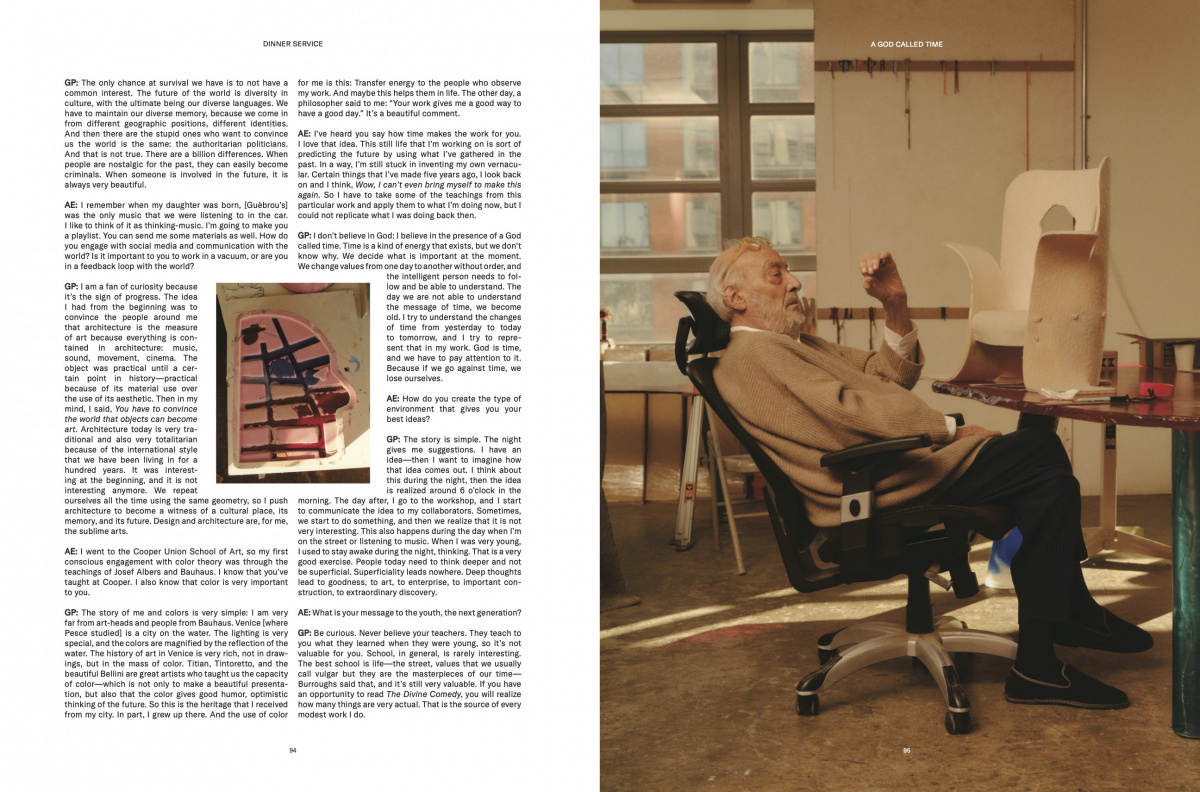
“A God Called Time” feature on Gaetano Pesce from Family Style magazine. Photography by Clément Pascal
What were the books you looked at when planning and structuring? Who do you think is doing really great work right now?
I told this to Patrick Li, who’s the creative director of T Magazine. I said, “T Magazine is the best magazine in America.” It’s so intellectual, creative, interesting, and cultural. Of course, T Magazine has the machine of The New York Times behind it, and they’ve been around for decades. But T Magazine is always on my aspirational list.
I think Family Style is an American magazine, but our sentimentality skews more toward New York and Europe. A lot of our inspiration, and many of the people we work with, are in London, Milan, and Paris. In London we adore System Magazine—it’s one of our favorites. In Paris, M Le magazine du Monde is a fabulous cultural magazine that’s a supplement to the newspaper. I think we pull from not-so-obvious sources while also recognizing who our peers are in the industry who are doing a spectacular job.
What’s interesting now is that, yes, it’s a hard time for media—no one’s going to tell you it’s easy—but I think, especially in independent magazines, everyone works together. Document Journal—where I worked previously, and now I count them as friends—gives us advice. Yes, there’s competition and a sense of limited ad spend or limited attention, but really it’s a unique community of image-makers and storytellers.
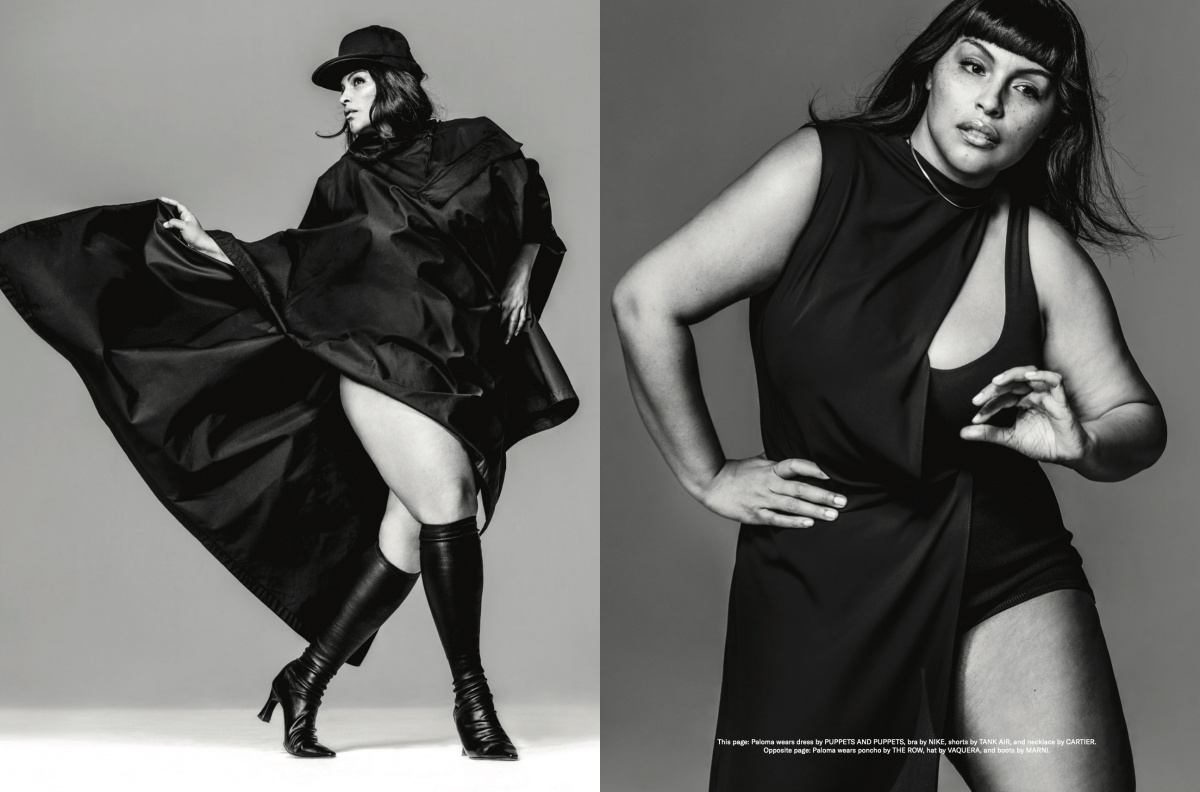
“Body Count” featuring Paloma Elsesser from Family Style magazine. Photography by Cruz Valdez
Joshua and I take a tangent into the details of magazine publishing before our conversation turns to discussing the many recent copies of culture magazines cluttering my desk.
Apartamento was the first independent magazine I ever heard of. I’m from Houston, Texas, from the suburbs, and I went into a Barnes & Noble and saw it. I was like, “What is this?” I thought it was an actual book. I never thought magazines could be like this. I was used to corporate magazines. The way they approach interiors is similar to how we approach fashion. We try to do it in a reverse way, from a person-forward sentimentality. I really respect that about them.
One interesting thing about a publication like Numéro is how much it can vary depending on the region. Numéro is hyper-localized. Numéro Berlin is, I think, one of the most interesting editions.
Middle Plane is also a fabulous title. They’re really under the radar and have been around longer than you’d think. They spotlight creative voices that aren’t front and center but are really shaping the industry. I appreciate their minimalism in design.
I used to write for Purple. Olivier Zahm is a one-man show—he writes, photographs, styles, and publishes it. They’re one of the longest-running independent magazines and definitely the first biannual type book. They’re going strong.
I live right next to Casa Magazines, an iconic magazine store in New York City’s West Village. Netflix does a lot of takeovers of the store with their magazine Queue. Sometimes it’s frustrating because it’s hard to see your favorite magazines when the store is full. I haven’t really gone through it. I think it’s nice that Netflix is allocating significant budgets to editorial projects, either from former editors or freelancers who could use commercial rates.
For more info visit family.style
